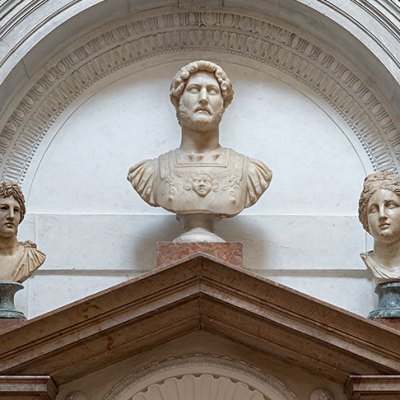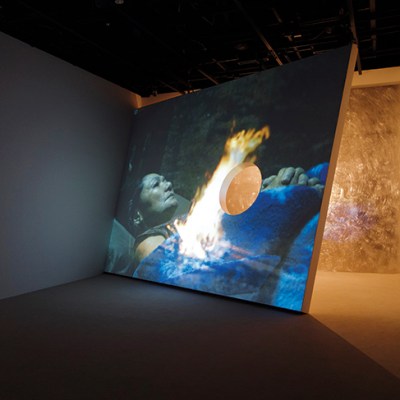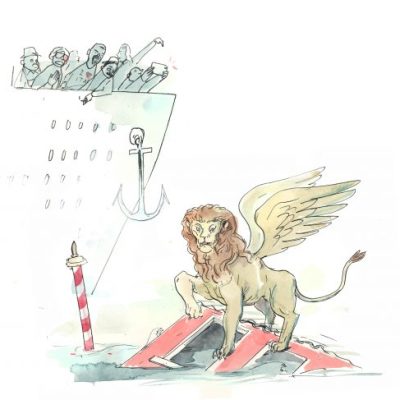Mary Simon, a prominent figure in Canadian Inuit affairs, gave a talk at University College London a few years ago about the Arctic and indigenous rights. She began her talk with a joke that, she said, was making the rounds across Inuit communities when she (born 1947) was young: an Inuit family consists of five people: two parents, two children, and an anthropologist.
The Inuit, with a total population of about 150,000, occupy an area in Arctic Canada, Greenland and Alaska vaster than Western Europe, much of it in the self-governing Canadian territory of Nunavut, which was established 20 years ago. Living a nomadic life for millennia, they were invaded relatively recently by clipboard-bearing anthropologists observing their every move, followed not long after by cops with aeroplanes and snowmobiles, coaxing communities to relocate to purportedly better areas.
The relocation of one such community is the subject of Kivitoo: What They Thought of Us (2018), a film directed by Zacharias Kunuk and produced by the collective Isuma, which represents Canada at the 2019 Venice Biennale. (The video is not in the pavilion.) Combining recent and archival footage (from 1999), Kunuk’s method is to let the people of the community talk. They describe their experiences and recall how they were told to pack their bags at the last minute to move about 50 kilometres away, told too that it was temporary and that they would soon be back. Many sob openly as they speak of returning to their community and finding everything burned down. There is a particularly poignant moment when a man picks up a rusty can-opener, wondering whether it still works. Kunuk’s role as a director – and by implication, ours as viewers – is simply to listen. Let them tell their own stories in their own language. Don’t observe or judge. Just listen.
Isuma is best-known for the Kunuk-directed feature film Atanarjuat: The Fast Runner (2001), based on an Inuit legend, which won the Caméra d’Or at Cannes and in 2015 was declared, in a poll of critics and film-makers, the greatest Canadian film of all time. When the film was released in Canada, Asinnajaq, one of five curators of Isuma’s pavilion, was around nine years old and living in suburban Montreal with her family, newly arrived from Inukjuak in Arctic Quebec. Living among suburbanites, her Inuit family, she recalls, received about a dozen copies of the film from neighbours. It was, she says, their way to reach out – finally a way for them to understand Inuit culture.
Asinnajaq is unequivocal in her view of Isuma’s importance to the Inuit community. Before Isuma, she says, any depiction of the Inuit was from the perspective of an outsider – the interloping anthropologist. Isuma was family: they told their own stories in their own language. Asinnajaq cites as an example Nanook of the North (1922), a hybrid fiction/documentary which, though it was lauded below the Arctic Circle, Asinnajaq considers a ‘belittling farce’. Isuma offered a correction to the outsider’s perspective. ‘To see something true to me was incredible. We learn by seeing. The details are accurate. We need to know our own history.’ One of the key motivations for Isuma, she adds, is to help the community grasp the future.
Actors on set during the filming of One Day in the Life of Noah Piugattuk. Photo: Levi Uttak; © Isuma Distribution International

The central work in the Venice pavilion is a video installation, One Day in the Life of Noah Piugattuk (2019). Set in 1961, during the Cold War, when bombers were cruising the Arctic, the story is close to Kunuk’s personal history. There are two main characters: Noah Piugattuk and ‘Boss’, an anonymous government official trying to convince Noah that he should move, along with his community, from his Baffin Island homeland to a settlement where they can be watched, counted, educated and forced to participate in the modern economy. The video, at about 110 minutes, consists entirely of the conversation between Noah and the ‘Boss’. As the latter tries to convince Noah to relocate, in English, and Noah responds in Inuktitut, the interpreter struggles to make them mutually comprehensible. It’s about the gulf not only in language, but in culture.
According to Josée Drouin-Brisebois, senior curator at the National Gallery of Canada, and another of the five Venice curators, ‘the whole structure of the film is the fabric of the conversation’ – a fabric that is threadbare and circular. In Inuit culture, observes Drouin-Brisebois, ‘Silence is a no. Not offering an answer is an answer.’ Boss and Noah are stuck in a loop of mutual incomprehension, sputtering through conflicting visions of the future.
When I ask Drouin-Brisebois about Isuma’s move from cinema to art installation, she points out that her first experience with Isuma, as a media curator, was its early video work. Isuma started with a local audience, she says, creating videos of Inuit life from an Inuit perspective, combining many of the techniques of experimental video with the tradition of oral storytelling. She also considers Isuma’s members to be activists, using video to create protest videos to resist, for instance, resource-hungry mining companies who want to build dams or mines across their ancestral hunting grounds. Isuma has even used the video format to submit evidence to tribunals – rather than return a bureaucratic form, prepared by the archetypal Boss in French and English and therefore full of culturally irrelevant misnomers, Isuma would produce and submit a video to argue their position.
The whole Isuma project is community-reviving, generating a unified voice to resist the perfidious sweet-talking of the Boss. The collaborative spirit is reflected in the choice of five curators, two with indigenous roots. The five curators are even writing collaboratively, a process that Asinnajaq finds especially invigorating, recognising how individual words have vastly different connotations for different people. ‘If you get aggravated, you can acknowledge that aggravation as your ego, which you can move to the side. It’s just not about you. It’s about the team.’
The Canada Pavilion at the Venice Biennale is at the Giardini della Biennale, Venice, from 11 May–24 November.
From the May 2019 issue of Apollo. Preview and subscribe here.


